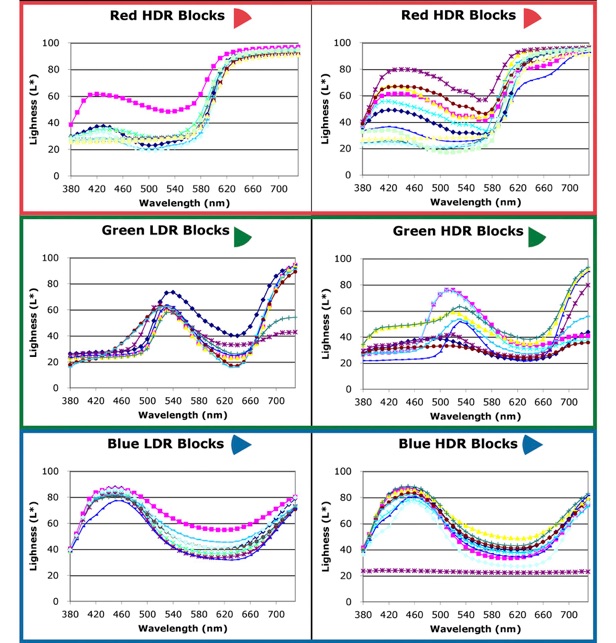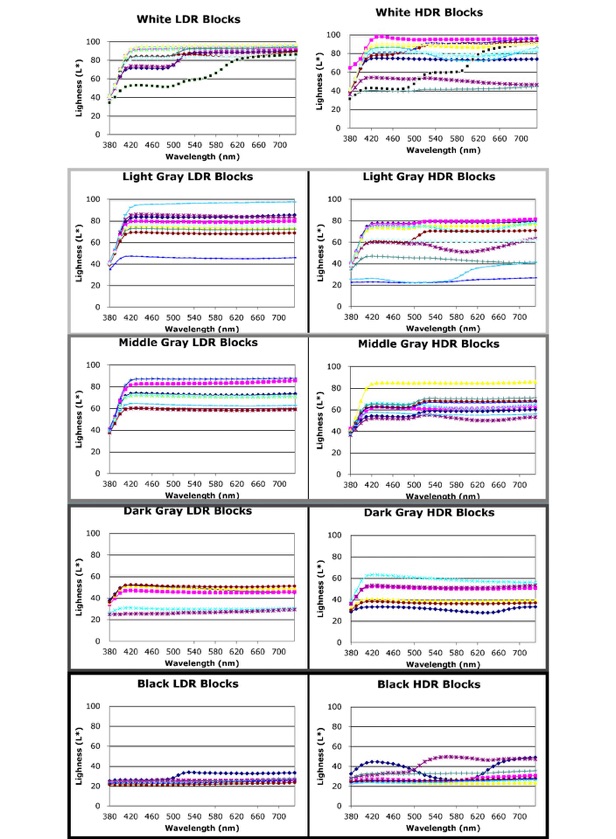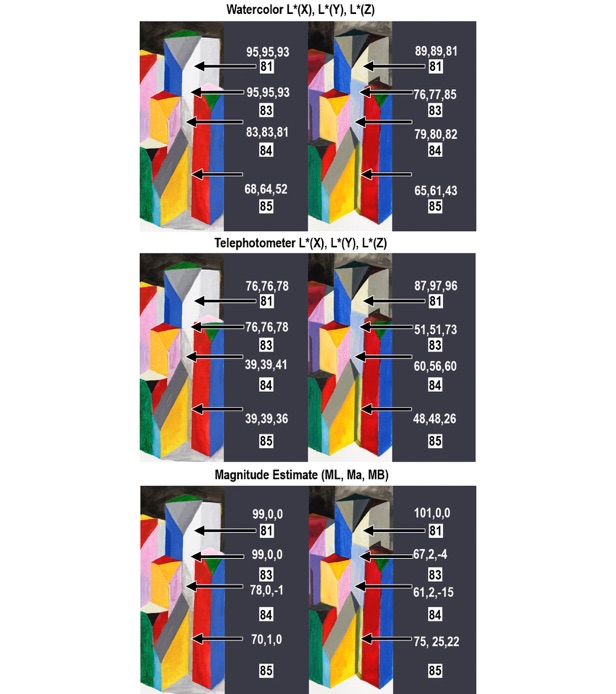Measurements of Watercolor’s Reflectance Spectra

This figure identifies the fact index number for each of 101 areas measured with a Spectrolino reflectance meter.

Photograph of Carinna Parraman’s painted watercolor of the LDR and HDR Mondrians

Reflectance spectra scaled by L* (Lightness(L*)) of red, green, and blue, facets measured from watercolor LDR and HDR paintings.

Reflectance spectra scaled by L* (Lightness(L*)) of cyan, magenta, and yellow facets measured from watercolor LDR and HDR paintings.

Reflectances of white, grays, and black facets measured from watercolor LDR and HDR paintings.

The study a region in the center of the 3-D Mondrians. The top row shows the sketch with Area IDs; the paint used on the blocks; the LDR; and HDR watercolor painting. The middle row shows the Spectrolino® watercolor L*(Y) values for these block facets. The bottom row shows the telephotometer L*(Y) values for these block facets.

The study off a region on the right of center of the 3-D Mondrians. The left image segments shows LDR watercolor and the right shows the HDR. All measurements are from a single white block with Areas 81,83,84,85. The top sections shows the watercolor reflectances [L*(X), L*(Y), L*(Z)]. The middle section shows photometer readings from the blocks [L*(X), L*(Y), L*(Z)]; and the bottom section show average observer magnitude estimates [ML,Ma,Mb].

This data show show significant inconsistencies between appearance and object reflectance. These discrepancies are examples of how the illumination plays an important role in color constancy. Both sets of measurements give very similar results. Both sets of measurements show that appearance depends on the spatial properties of illumination, as well as reflectance. Edges in illumination cause large changes in appearance, as do edges in reflectance.
